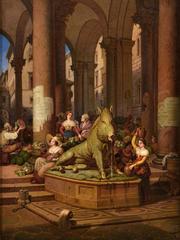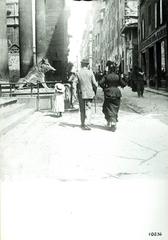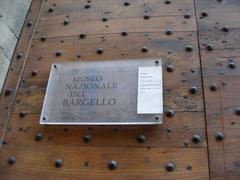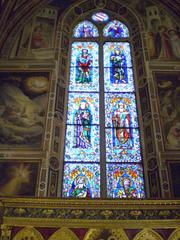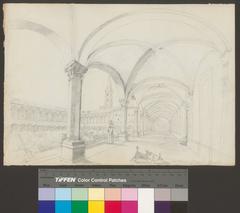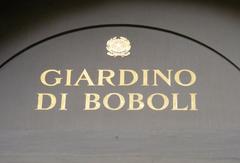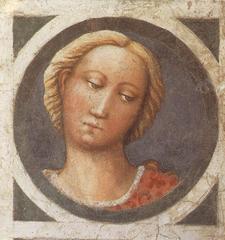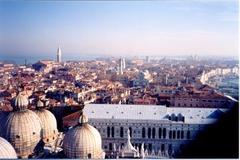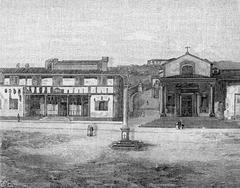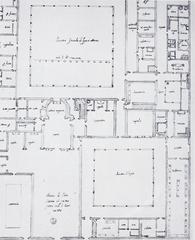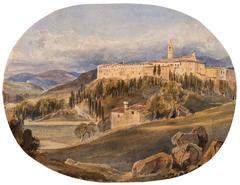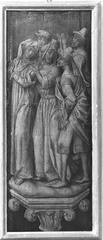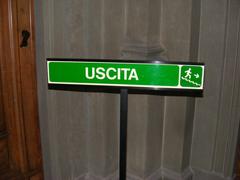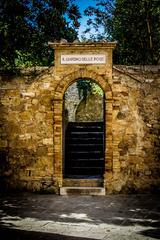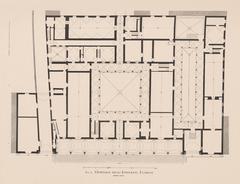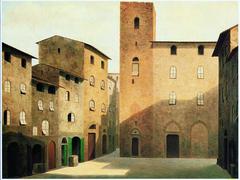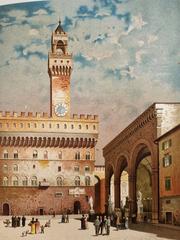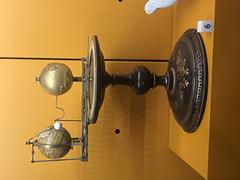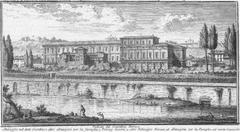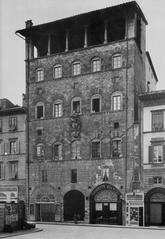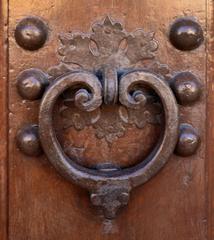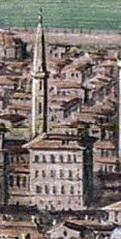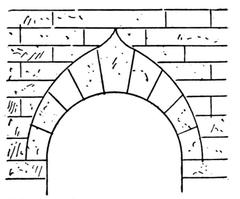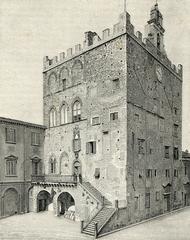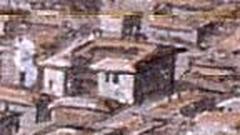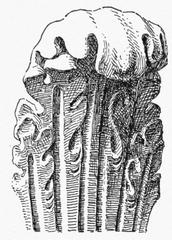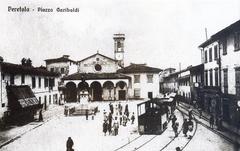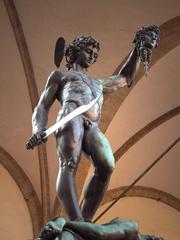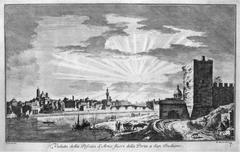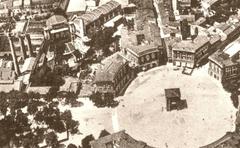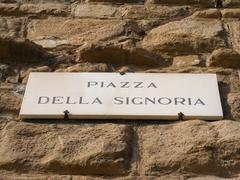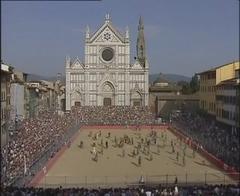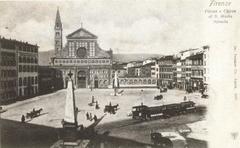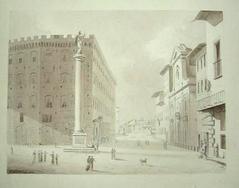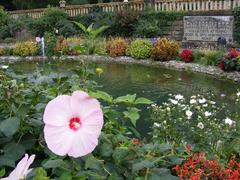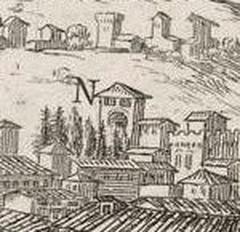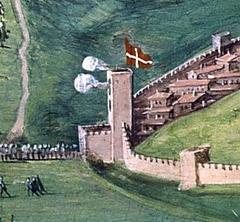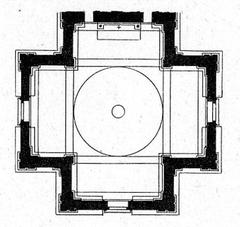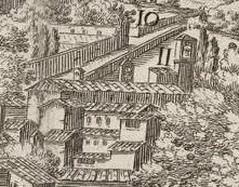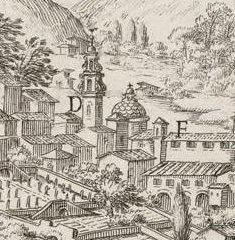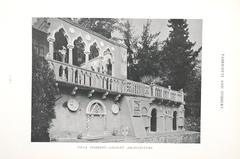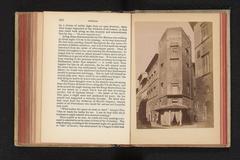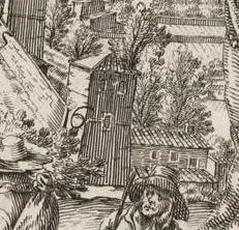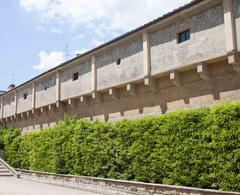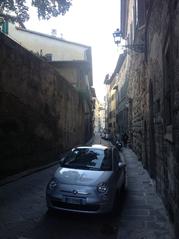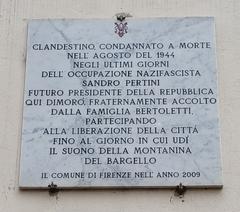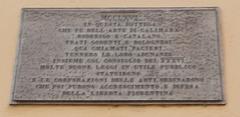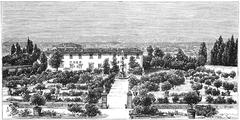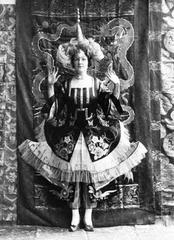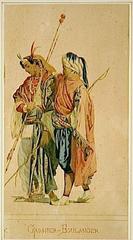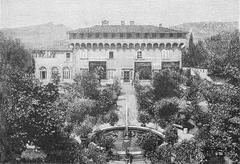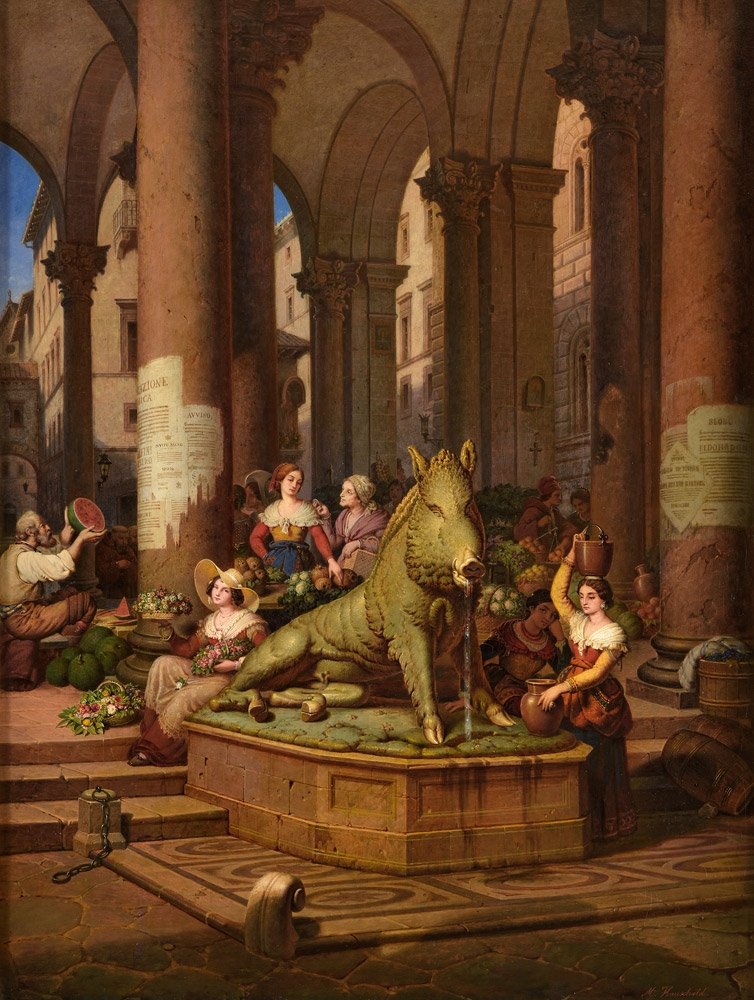
Comprehensive Guide to Visiting Mercato del Porcellino in Florence, Italy
Date: 18/07/2024
Introduction
Nestled in the heart of Florence, Italy, the Mercato del Porcellino is a market steeped in history and brimming with cultural significance. Known also as the Mercato Nuovo, this vibrant marketplace has evolved over centuries from a Renaissance trading hub to a bustling modern-day bazaar, attracting both locals and tourists. Constructed in the mid-16th century under the orders of Cosimo I de’ Medici, the market originally served as a center for luxury goods like silk and precious metals. Its Renaissance-style architecture, designed by Giovanni Battista del Tasso, features elegant arches and open loggias, creating a functional yet aesthetically pleasing space for commerce.
A highlight of the market is the iconic Porcellino Fountain, a bronze statue of a wild boar created by Pietro Tacca in 1634. This fountain has become a symbol of Florence, with traditions tied to it promising good luck and ensuring a return visit to the city. Over time, the market has adapted to the changing economic landscape, now offering high-quality leather goods, souvenirs, and artisanal products. Despite commercialization, it retains its historic charm and remains integral to Florence’s cultural heritage (Florence Inferno, Visit Florence).
Whether you’re a history enthusiast, a shopping lover, or simply looking to immerse yourself in local culture, the Mercato del Porcellino provides a unique and enriching experience. This guide will take you through its rich history, visitor tips, and the cultural and social impacts of this iconic Florentine landmark.
Table of Contents
- Introduction
- Historical Background
- The Market in Modern Times
- Visitor Information
- Cultural and Social Impact
- Preservation and Conservation Efforts
- Conclusion
- FAQ
- Call to Action
Discover the Rich History and Visitor Guide of Mercato del Porcellino in Florence
Historical Background
Origins and Early History
The Mercato del Porcellino was constructed in the mid-16th century under the orders of Cosimo I de’ Medici, the Grand Duke of Tuscany. Renowned architect Giovanni Battista del Tasso designed it, and the market was completed in 1551. Originally, it served as a trading hub for luxury goods like silk and precious metals, reflecting Florence’s status as a center of commerce during the Renaissance.
Architectural Significance
The market’s Renaissance-style architecture is characterized by harmonious proportions and elegant arches. It is an open loggia with stone columns supporting a terracotta-tiled roof, providing a functional yet aesthetically pleasing space for merchants. The design allows for natural light and ventilation, ideal for trading activities.
The Porcellino Fountain
A highlight of the Mercato del Porcellino is the bronze statue of a wild boar, known as “Il Porcellino” (The Little Pig), created by Pietro Tacca in 1634. Inspired by an ancient marble boar in the Uffizi Gallery, this fountain has become a symbol of Florence. Tradition holds that rubbing the boar’s snout and placing a coin in its mouth brings good luck and ensures a return visit to Florence. Over the centuries, the snout has been polished to a bright sheen by countless hands (Florence Inferno).
Evolution Over the Centuries
Initially dedicated to luxury goods, the market evolved by the 19th century into a bustling marketplace for items like straw hats, leather goods, and souvenirs. This shift mirrored the changing economic landscape of Florence and the rise in tourism.
The Market in Modern Times
Today, the Mercato del Porcellino remains vibrant, attracting visitors worldwide. It is renowned for high-quality leather goods, including bags, belts, and wallets, as well as souvenirs like scarves, jewelry, and ceramics. Despite commercialization, the market retains its historic charm and remains integral to Florence’s cultural heritage.
Visitor Information
Ticket Prices and Opening Hours
The Mercato del Porcellino is open daily from 8:00 AM to 7:00 PM, with free entry. However, it is advisable to visit early to avoid crowds and get the best selection of goods.
Travel Tips
- Best Time to Visit: Early mornings or late afternoons are ideal for a more relaxed experience.
- Payment Methods: While some vendors accept credit cards, carrying cash is recommended.
- Bargaining: Haggling is common, so feel free to negotiate prices.
Nearby Attractions
Located near other historic landmarks like the Ponte Vecchio and the Uffizi Gallery, the Mercato del Porcellino is a perfect starting point for exploring Florence’s rich heritage.
Accessibility
The market is wheelchair accessible, with smooth pathways and ramps. Public transportation options are also available, making it easily accessible for all visitors.
Cultural and Social Impact
Impact on Local Community
The market has been a meeting place for locals and tourists alike, fostering a sense of community and cultural exchange. Its central location makes it a focal point for interaction and commerce.
Special Events and Guided Tours
Occasionally, the market hosts special events and guided tours that offer deeper insights into its history and significance. These events are perfect for those looking to enrich their visit.
Best Photographic Spots
The Porcellino Fountain and the market’s open loggia provide excellent photo opportunities. Capture the essence of Florence with these iconic backdrops.
Preservation and Conservation Efforts
Recent efforts to preserve the Mercato del Porcellino include careful maintenance and restoration work. Initiatives to promote high-quality, locally-made products aim to maintain the market’s unique character (Visit Florence).
Conclusion
The Mercato del Porcellino is not just a market; it’s a living testament to Florence’s rich history and cultural heritage. From its origins as a luxury goods hub to its current status as a popular tourist destination, the market has evolved while retaining its historic charm. Don’t forget to rub the Porcellino’s snout for good luck and ensure a return visit to this beloved symbol of Florence.
FAQ
Q: What are the Mercato del Porcellino visiting hours?
A: The market is open daily from 8:00 AM to 7:00 PM.
Q: Is there a ticket price for Mercato del Porcellino?
A: Entry to the market is free.
Q: What are some nearby attractions?
A: Nearby attractions include the Ponte Vecchio and the Uffizi Gallery.
Q: Is the market wheelchair accessible?
A: Yes, the market is wheelchair accessible with smooth pathways and ramps.
Call to Action
Planning a trip to Florence? Don’t miss out on visiting the Mercato del Porcellino. Download the Audiala app for more travel tips and updates, and follow us on social media for the latest news and recommendations.
References
- Florence Inferno. (n.d.). Porcellino Fountain. source url
- Visit Florence. (n.d.). Mercato Nuovo. source url
